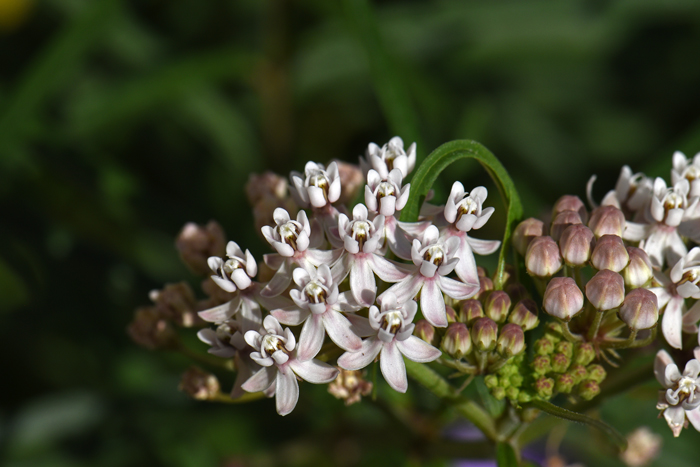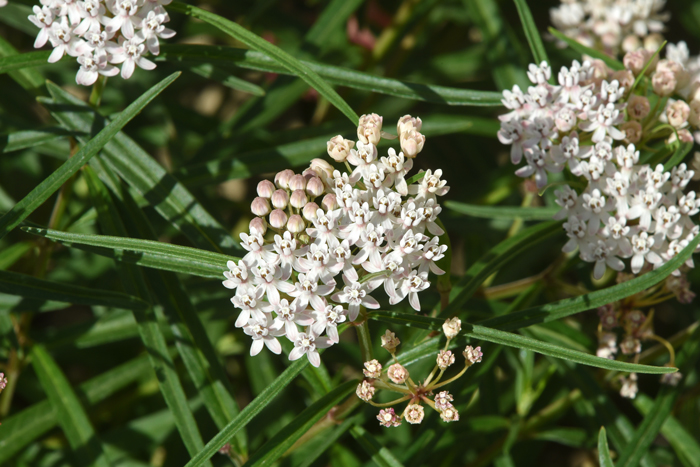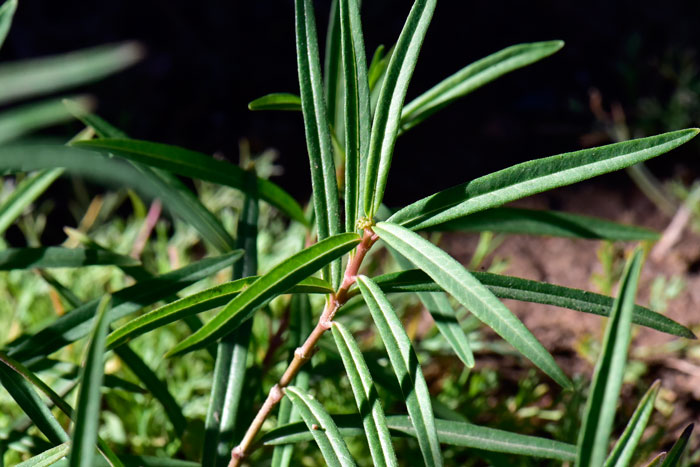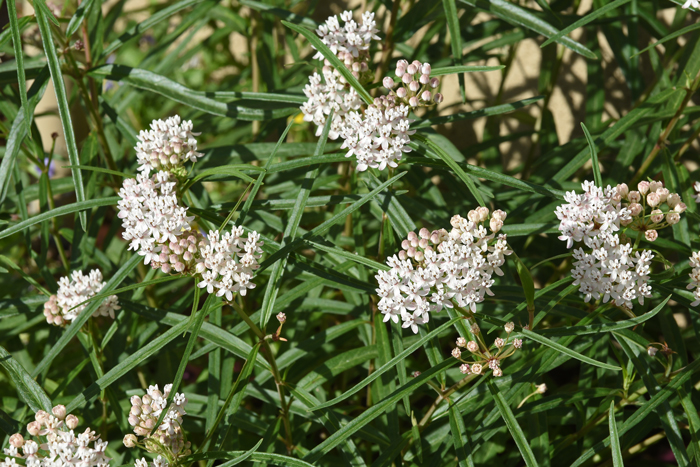Asclepias angustifolia, Arizona Milkweed





Scientific Name: Asclepias angustifolia
Common Name: Arizona Milkweed
Also Called: Milkweed, Narrow-leaved Milkweed (Spanish: Talayote)
Family: Asclepiadaceae, Milkweed Family
Synonyms: (Asclepias linifolia, Gomphocarpus angustifolius, Gomphocarpus fruticosus)
Status: Native
Duration: Perennial
Size: Up to 2 feet or more.
Growth Form: Forb/herb;
Leaves: Green; linear, distinctively short petioled, mostly in pairs.
Flower Color: Whitish-pink;
Flowering Season: June to July.
Elevation: 4,000 to 5,000 feet.
Habitat Preferences: Arroyos, canyons, along streambeds, hilly slopes.
Recorded Range: Arizona Milkweed is rare in the United States. It is found only in Arizona in the far southern part of the state in Cochise (Huachuca Mountains), Pima (Santa Catalina Mountains) and Santa Cruz (Bear Valley and Sycamore Canyon) counties.
North America & US County Distribution Map for Asclepias angustifolia.
U.S. Weed Information: No information available.
Invasive/Noxious Weed Information: No information available.
Wetland Indicator: No information available.
Threatened/Endangered Information: No information available.
In the Southwestern United States: Arizona has 29 species of Asclepias, California has 18 species, Nevada has 13 species, New Mexico has 26 species, Texas has 38 species, Utah has 17 species. All data is approximate and subject to taxonomic changes.
Comments: Arizona Milkweed is a rare plant in the United States. It is often visited by bees, butterflies and other insects.
Also see in Southwest Desert Flora; Antelope Horns Milkweed, Asclepias asperula, Mexican Butterfly Weed, Asclepias curassavica, Dwarf Milkweed, Asclepias involucrata, Pineneedle Milkweed, Asclepias linaria, Rush Milkweed, Asclepias subulata and Horsetail Milkweed, Asclepias subverticillata.

